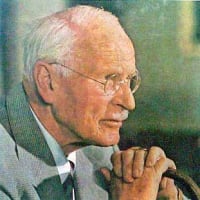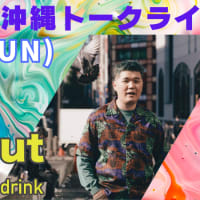
"アサンプティオ・マリアエの教義化は、プレロマの中のヒエロス・ガモス(「聖なる結婚」)を指し示しており、その結果、先に述べたように、将来、神の子が誕生することを暗示している。この子は、受肉へと向かう神の傾向に従って、経験的な人間をその出生地として選択する。
この形而上学的プロセスは、無意識の心理学では個性化プロセスとして知られている。このプロセスが、太古の昔からそうであったように、原則として無意識のうちに進行する限り、それは、ドングリがオークになり、子牛が牛になり、子供が大人になること以上の意味はない。
しかし、個性化のプロセスを意識化すると、意識が無意識と対峙し、相反するもののバランスを取らなければなりません。これは論理では不可能なので、対立するものの不合理な結合を可能にするシンボルに頼ることになる。それらは無意識によって自然に生み出され、意識によって増幅されます。このプロセスの中心となるシンボルは、人間の全体性である「自己」を表しており、一方では人間に意識的なものからなり、他方では無意識の内容からなる。自己とは「テレオス・アンソロポス」、つまり人間全体のことであり、その象徴は神の子とその同義語である。これはプロセスの非常に要約されたスケッチに過ぎないが、それは現代人の中でいつでも観察することができるし、中世のヘルメス哲学の文書の中で読むこともできる。無意識の心理学と錬金術の両方を知っている人にとっては、シンボル間の並行性は驚くべきものである。"
- カール・グスタフ・ユング、『ヨブへの答え』、『心理学と宗教。西洋と東洋、Par. 755
アートワーク|ホモ・ヴィトルヴィアーノ、レオナルド・ダ・ヴィンチ
“The dogmatization of the Assumptio Mariae points to the hieros gamos in the pleroma, and in turn implies, as we have said, the future birth of the divine child, who in accordance with the divine trend towards incarnation, will choose as his birthplace the empirical man.
The metaphysical process is known to the psychology of the unconscious as the individuation process. In so far as this process, as a rule, runs its course unconsciously as it has from time immemorial, it means no more than that the acorn becomes an oak, the calf a cow, and the child an adult.
But if the individuation process is made conscious, consciousness must confront the unconscious and a balance between the opposites must be found. As this is not possible through logic, one is dependent on symbols which make the irrational union of opposites possible. They are produced spontaneously by the unconscious and are amplified by the conscious mind. The central symbols of this process describe the self, which is man’s totality, consisting on the one hand of that which is conscious to him, and on the other hand of the contents of the unconscious. The self is the “teleios anthropos”, the whole man, whose symbols are the divine child and its synonyms. This is only a very summary sketch of the process, but it can be observed at any time in modern man, or one can read about it in the documents of Hermetic philosophy from the Middle Ages. The parallelism between the symbols is astonishing to anyone who knows both the psychology of the unconscious and alchemy.”
— Carl Gustav Jung, Answer to Job, Psychology and Religion: West and East, Par. 755
Artwork | Homo Vitruviano, Leonardo Da Vinci
ヒエロス・ガモス
https://ja.wikipedia.org/wiki/%E3%83%92%E3%82%A8%E3%83%AD%E3%82%B9%E3%83%BB%E3%82%AC%E3%83%A2%E3%82%B9



















